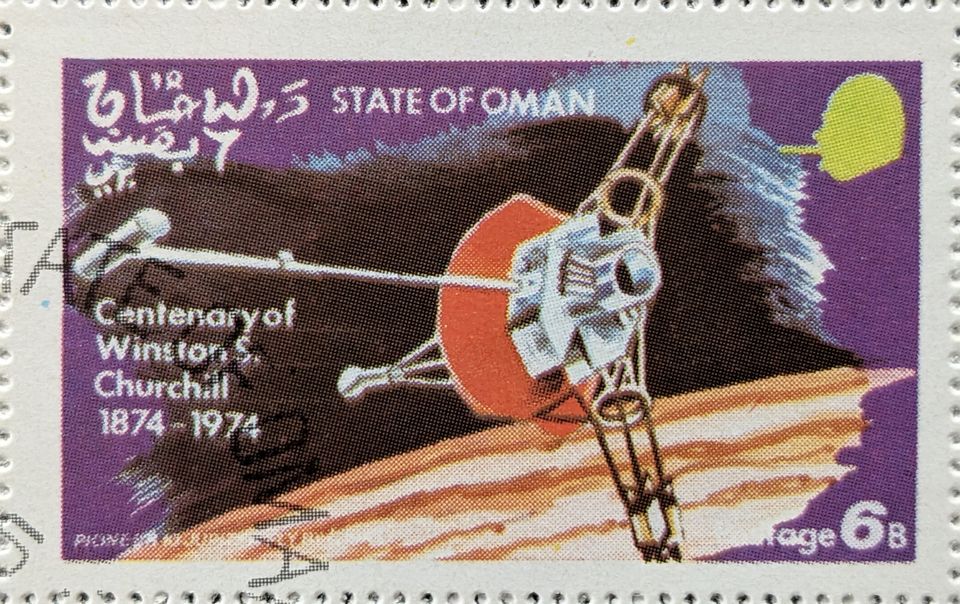Amazon Kuiper: More Than LEO Broadband

Gosh, the SpaceX Starship test launch has everyone writing down guesses during the past few days about how Starship might impact the industry. So, perhaps it would behoove me to join them. Here are a few of my own prognostications written during the past few years about Starship’s impact: “Starship and the Gatekeepers of Mars” and “The Potential Horror and Devastation of Progress.”
Shameless self-promotion out of the way, SpaceX did attempt launching Starship today. It appeared to get to a 37-kilometer altitude and achieved over 2,000 kph, both firsts for the new launch system. Unfortunately, at least five Raptor engines seemed to fail, and Starship didn’t separate from the first stage. Result: a spiral ending in flight termination. People interested in watching can see it on SpaceX’s YouTube channel, starting around the 44:50 mark.
It’s just a test launch, so maybe embracing some facts about space launches would be healthy for those expecting perfection the first time out?
Of the current and prospective low Earth orbit (LEO) broadband constellation operators, Amazon, with its Kuiper (originally, Project Kuiper), was always going to be the interesting one. When I first started looking at the constellations (OneWeb, Kuiper, Lightspeed, and Starlink), I always believed that Amazon would bring something else to the LEO broadband competition. Something other than providing satellites for people to use to get internet access. Something that leverages its space-based infrastructure to gain more customers. Of course, it will fight for internet subscribers, but it will also offer more than any of its dumb-space-pipe competitors.
A Vision for Kuiper
Amazon’s CEO, Andy Jassy, dedicated 300 words to Kuiper in his annual shareholder letter, released on April 13, 2023. In that paragraph, Jassy describes Amazon’s vision for Kuiper:
“Our vision for Kuiper is to create a low-Earth orbit satellite system to deliver high-quality broadband internet service to places around the world that don’t currently have it. There are hundreds of millions of households and businesses who don’t have reliable access to the internet. Imagine what they’ll be able to do with reliable connectivity, from people taking online education courses, using financial services, starting their own businesses, doing their shopping, enjoying entertainment, to businesses and governments improving their coverage, efficiency, and operations. Kuiper will deliver not only accessibility, but affordability.”
Sure, there is the typical LEO broadband marketing of what a satellite system like Kuiper can do: people without broadband internet access exist, but Kuiper can fix that. Whether the company immediately (or even eventually) does fix it is a different question. Many of those places contain populations who can’t afford Starlink.
However, as of January 2023, Amazon’s internet “marketplaces” ran in 20 nations. Amazon was also supposed to launch new marketplaces in nations such as Nigeria and South Africa by April 2023. In theory, the company has a leg up on its LEO broadband competitors just through the presence of its marketplaces, which consumers in those nations increasingly use. That consumer usage of Amazon’s retail services gives the company detailed insight into their needs and wants, what is affordable, what services are being used and where, etc. Amazon’s management doesn’t have to imagine what people will be able to do with reliable connectivity. It already knows.
Jassy lists online education courses, financial services, starting businesses, shopping, and entertainment as examples of what people will do. Not coincidentally, Amazon offers everything on that list to its customers, primarily through the Internet. Moreover, each service already generates tens of billions in revenue. So wouldn’t it make sense for the company to leverage Kuiper to increase its potential retail customer base and begin to lure more into its subscriber ecosystems? Especially since its LEO broadband competitors have nothing close to Amazon’s offerings.
Already Profitable Without Kuiper
The company’s Kuiper satellite constellation plans can’t be looked at solely through the lens of an internet broadband provider from space. Amazon has made it clear that Kuiper represents something more than communications infrastructure. Amazon is an internet retail platform and business. Kuiper is a customer delivery mechanism for Amazon that “happens” to give people internet access. That access allows people to buy services and “stuff” from the company.
The company’s “official” mission still sticks pretty close to the original one Jeff Bezos laid out so long ago: being Earth’s most customer-centric company, best employer, and safest place to work. Implementing various ways to accomplish that mission has resulted in Amazon making hundreds of billions of dollars in revenues and profit annually. The company’s revenue for 2022 was nearly $514 billion. Profits weren’t quite half that. Nevertheless, Amazon appears to be doing rather well, not resorting to valuation rounds and salesmanship to attract more money from investors. It’s a business, after all–not a 21-year-old space startup.
Those profits and revenues should put the $10 billion investment in Kuiper that the company announced in 2020 in perspective. If Amazon were to plunk down that sum today (unlikely–it’s spreading that investment over time), it would represent less than 2% of the company’s 2022 revenues and slightly less than 4.5% of its profits. Also announced in 2020, Amazon advertised that it had “invested more than $350 billion in the United States….” The company said that investment went into things such as infrastructure and compensation. Amazon spends more on research and development ($100 billion) than its total investment in Kuiper.
Although Amazon still isn’t operating any satellites in orbit, it appears to be making progress on Kuiper. United Launch Alliance (ULA) will launch two of its demonstration satellites sometime in 2023 (that date hinges on ULA addressing Vulcan Centaur teething problems). In addition, Amazon introduced not just one but three types of phased-array antennas in March 2023. Those antennas range from a small, 7-inch square antenna to an 11-inch square and up to a 30X19-inch antenna. Amazon notes that the 11-inch square antenna costs the company less than $400 to manufacture (a Starlink terminal costs SpaceX ~$650-$1300).
The company hasn’t published satellite manufacturing costs nor provided subscription pricing. But, based on the three antenna terminal designs, there will be at least three pricing tiers. Already, this is where I head into conjecture. However, it would be good to keep in mind that, as of this writing, Amazon has no operational Kuiper satellite in orbit. Furthermore, it’s not clear that ANY of the launch providers Amazon has contracted with to launch its satellites will be ready to support the constellation’s deployment timeline.
With those limitations noted, conjecture is still a fun tool, so why not use it here?
Sheer Conjecture (based on Amazon’s Past)
When Kuiper finally gets into orbit, I think Amazon will offer more than three subscription pricing tiers for internet service. Based on how the company has offered its other service-delivery devices (Kindle, Kindle Fire, Fire TV), it will probably offer discounts on terminals that somehow integrate Amazon’s advertising into the user experience. Or maybe it won’t need to offer discounts for the antenna terminals, as they already appear to cost less to manufacture than any offered by its competitors. This may indicate the company intends to somehow make the subscription cost lower.
Amazon is extremely familiar with how subscriptions work. It offers Amazon Prime and its variants (Prime Video, Prime Student), Audible, Kindle Unlimited, Amazon Music, Amazon Fresh, etc. Net sales of those services were slightly over $35 billion in 2022. Whatever subscription an Amazon customer selects would be added to Kuiper’s internet service subscription cost, which goes all to Amazon.
With so many subscription offerings, it’s difficult to say which tack the company would take with Kuiper subscriptions. It might offer something like Amazon Space Prime, which includes everything from Prime and then internet access on top of it. A mobile antenna would allow the company to offer streaming music services to vehicles (this has not been announced–yet). It may offer discounts to subscribers for accepting advertising. Although to be clear, I don’t believe inserting ads is optimal for customers–but that depends on which customer Amazon is aiming for (consumers vs. advertisers).
Kuiper also allows Amazon to extend customer access to Amazon Web Services (AWS). Without Kuiper, AWS already generated ~$80 billion in sales in 2022. It likely will be that the Kuiper customer base might contribute a tiny share of that, but every little bit counts. AWS is also used in Amazon’s Ground Station offering. It would be interesting to see how the 1 Gigabit per second antenna terminal ties in with the company’s AWS Ground Station. Using the Kuiper network to tie in its Ground Station offering would impact another space business: ground stations. Maybe Amazon doesn’t pursue that option, but...it’s fun to think about. But, also…Amazon has demonstrated it doesn’t like leaving money on the table.
All of the rambling above is to reiterate that perhaps the usual way of analyzing Kuiper’s business (sales & distribution, Mbps, launch and technology costs, etc.) is interesting. But, it also seems beside the point. Amazon clearly has other ways to make money from its Kuiper venture than just offering internet service. Arriving late to the LEO broadband party doesn’t make its network less impactful or its services less valuable. However, when it does deploy Kuiper, those services will be there for those who want them.
As it begins offering those other services through Kuiper, that may lead to a culling of other space-based broadband providers. Especially those continually pushing off satellite deployments while seeking funding. Of course, governments can step in (and have) to save those companies. But that’s conjecture for another day.




Comments ()